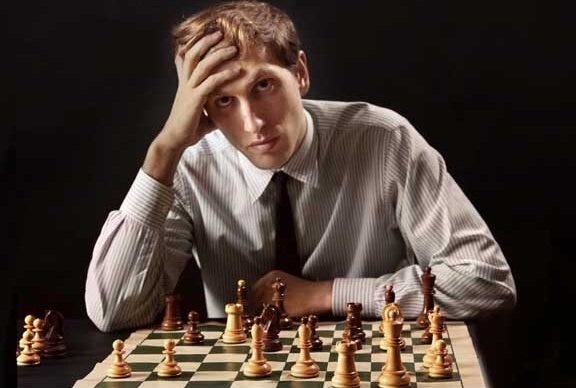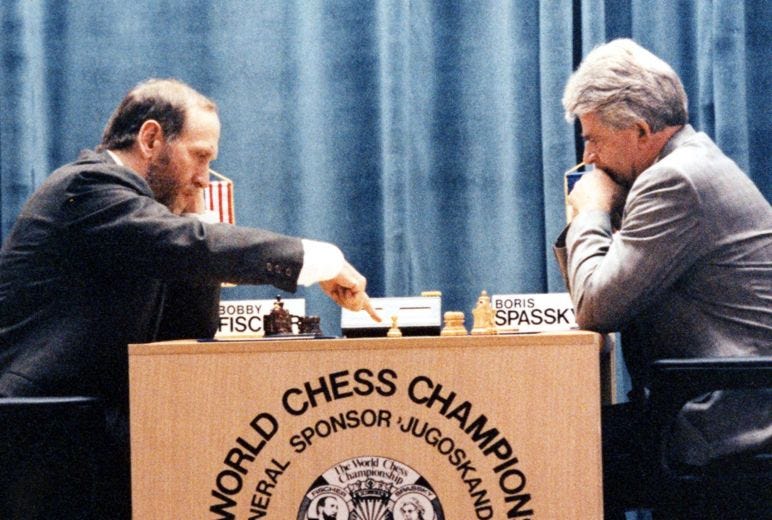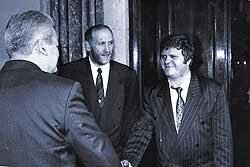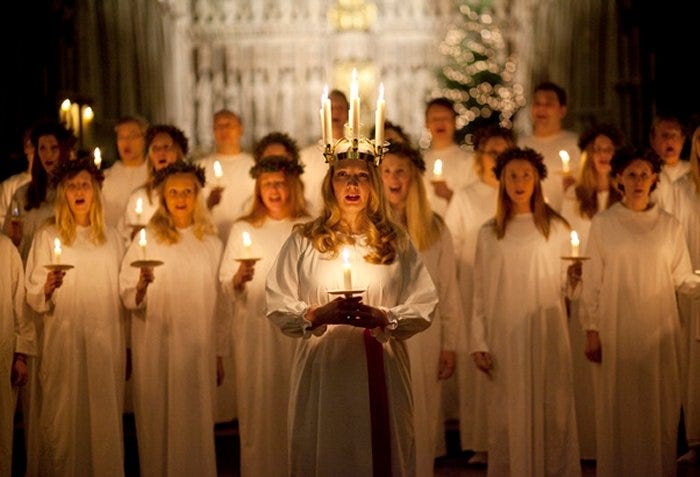XXV. When the Balkans stopped the King's Gambit
What's behind the Netflix series The Queen's Gambit. Inspired by the story of Bobby Fischer indicted for having played the "revenge match of the 20th century" in 1992 when Yugoslavia was under embargo
Hi,
welcome back to BarBalkans, the Italian newsletter whose aim is to give a voice to the Western Balkans’ stories, on the 30th anniversary eve of the Yugoslav Wars.
Raise your hand if you’ve never watched Netflix’s The Queen’s Gambit.
In just 28 days from its release (October, 28), over 62 million subscribers have seen the 7 episodes on the enfant prodige Elizabeth Harmon, based on the 1983 self-titled novel by Walter Travis.
It wouldn’t make much sense for me to tell something about this issue, right?
I guess you already know everything.
Or perhaps it might surprise you the fact that there are many unknown stories under this iceberg, waiting to come to light.
For example, the story of Robert James Fischer, one of the greatest chess players of all times and a source of inspiration for the character of Beth Harmon.
Bobby Fisher, who encountered his swan song in the Balkans.
“The King’s Gambit”
As in Travis’ novel, Netflix’s Beth Harmon is a fictional character. But it doesn’t mean she’s not inspired by any real character.
Insiders talk about several chess players from the past. Probably, the closest one is Robert ‘Bobby’ James Fischer. You can see many similarities:
1. Both Americans, they ruled the world of chess between the Fifties and Sixties (Fischer won the US championship when he was 14 years old, Beth 16).
2. Complicated family relationships. Beth grows up in an orphanage and then she’s adopted by a not exactly happy family. Fischer had no father figure and he had a turbulent relationship with his mother.
3. Behavioral disorders. Beth develops problems with narcotics and alcoholism, combined with an obsession for playing chess. Provocative, controversial, socially unable to relate to others, Fischer may have suffered from Asperger’s Syndrome.
4. The confrontation between the two blocks during the Cold War. They’re both Americans who challenge Soviet champions: Fischer was repeatedly pressured by the US government to safeguard “the honor of the country”.
5. The challenger: a Russian champion. Vasily Borgov for Beth, Boris Spasskij for Fischer. In the Netflix series, Borgov represents an old Spasskij who has already defeated several times the young American before the “final match”. Once, after a win, Spasskij left Fischer in tears (comparable to Beth’s second match against Borgov).
The similarities with the protagonist of The Queen’s Gambit are evident.
But who was Bobby Fisher really?
Born in Chicago on March 9, 1943, Robert Fischer was the son of Regina Wender - a Swiss/Polish woman with Jewish origins - and Gerhardt Fischer. At least on his birth certificate. Because in 1939 Regina moved to the USA without her husband and in 1942 she had an affair with the Hungarian Jewish physicist Paul Nemenyi.
He started playing chess at the age of 6, using the instructions from a set bought in a candy store. He was noticed two years later at a public event. He joined his first tournament in 1952 and he became a pupil of the Master John William Collins when he was 13 years old.
In 1956 he won the US Junior Chess Championship in Philadelphia. In the same year he received the invitation to play in the Lessing J. Rosenwald Trophy Tournament, as one of the best 12 American chess players. He won the first “Game of the Century” against the Grand Master Donald Byrne.
In January 1958, before turning 15, he became the youngest US champion ever. He also gained the title of International Master and he dropped out of school.
Bobby Fischer’s star began to shine - winning 8 US titles in 9 years - but he also showed the first signs of his eccentric mood. In Moscow, he went on a rampage when he found out that he couldn’t play against the Soviet champions and he called «Russian pigs» the players of the Central Chess Club.
In 1962, Fischer accused the International Chess Federation (FIDE) of not being sufficiently in control of the Soviets: «The Russians have manipulated the world of chess», Fischer attacked. He thought they consulted during the matches and they manipulated the draws to keep the title of World Chess Champion “at home”.
He boycotted international competitions until 1967. He also demonstrated his misogyny, even commenting on a compliment from the US champion, Lisa Lane: «They’re weak, all women. They shouldn’t play chess, they’re like beginners».
After many memorable victories, Fischer showed up in Reykjavik (Iceland) in 1972 to challenge Boris Spasskij for the World Championship title. The Western press immediately called it “the match of the 20th century”.
Even the US Secretary of State, Henry Kissinger, called Fischer to dissuade him from walking out (because of his temper), appealing to his patriotism.
Despite a big mistake in the first game, Fischer eventually won the “match of the 20th century” and became the World Chess Champion. For the United States it was a great propaganda operation against the Soviet Union, the undisputed dominator in chess after the Second World War.
The “revenge match of the 20th century”
1972. Fischer is the World Chess Champion.
We are 20 years and almost a continent away from the “revenge match of the 20th century” in the Balkans, the official end of Fischer’s career.
Twenty years in the shadow, he didn’t play a single competitive game. He didn’t defend the title in 1975 against Anatolij Karpov. Meanwhile, he had a love affair with the German chess player Petra Stadler, who had been introduced by Spasskij. Nothing vaguely comparable to his love (or obsession) for chess.
Twenty years of silence.
Until 1992. The year of the rematch against Boris Spasskij, a re-edition of their former glories.
Bobby Fischer not only accepted, but even claimed (in vain) that the match was recognized by FIDE as the World Chess Championship and that he was defending the title (hold instead by Garry Kasparov) 20 years later.
However, the real problem was another one: the place where the event took place.
Budva (in Montenegro) and Belgrade were under a severe UN embargo on Yugoslavia, which also included sanctions on sporting events.
Before the start of the match, the US Department of the Treasury warned Fischer that his participation was illegal. He would have violated President George H. W. Bush’s sanctions against engaging in economic activities with Yugoslavia.
In response, during the press conference on September 1, a histrionic Fischer spat on the US order, stating «this is my reply».
His violation of the order led US Federal officials to initiate a warrant for his arrest. Since then, Fischer never went back to the United States and became almost stateless.
The last match against Spasskij - won easily by Fischer - was also the last one of his entire career.
In the former Yugoslavia, one of the greatest players of all time showed the world that he was still “The king of Chess”.
Much more than a match
There is a hidden story beneath this hidden story. And it’s about the reason why the match was played precisely in Budva and Belgrade.
In 1992, the process of disintegration of Yugoslavia was in full swing. Bosnia and Herzegovina was under siege, which would last for another 3 years.
In an attempt to isolate the Serbian president, Slobodan Milošević, an embargo against Serbia and Montenegro was imposed. It was precisely the case of the “revenge match of the 20th century”, because:
«The Yugoslav sponsor benefits from the use of its name and reputation».
- Letter from the US Department of the Treasury to Robert Fisher
Who was the sponsor? The president of the Jugoskandic Bank, Jezdimir Vasiljević. He was one of the most powerful men in Serbia, involved in financial speculation and suspected of illegal arms trafficking. He put on the plate 5 million dollars.
He wanted to put the Western world in a bad light: «The United States are economically strangling an event of great cultural importance», accused Vasiljević.
Behind the president of the Yugoskandic Bank there was the long arm of Slobodan Milošević, who shared the same interest that the game was played right there, right at that moment.
From Budva the two chess players moved to Belgrade to continue the match and Milošević wanted to be photographed with Fischer and Spasskij. «This match is very important», stated Milošević, «because it is played while Yugoslavia is under an unjustified embargo».
Fischer’s swan song came at the end of the confrontation with Spasskij.
For Milošević, the countdown had just begun.
Pit stop. Sittin’ at the BarBalkans
We’ve arrived at the end of this piece of road. We deserve a pause.
I guess you now expect our usual suggestion from the bar, somehow related with chess or with the 1992 match.
Not exactly.
Because today is the eve of Saint Lucy’s night (December 12-13). As a respectable man from Verona, I have to pay homage to the figure of this popular tradition who protects and brings gifts to thousands of children, more or less grown up.
It’s like this story was her gift for all of us. Right here, at our BarBalkans.
In the Balkan peninsula there are some traditions connected to the cult of Saint Lucy. The most important is in Croatia, in particular in the Dalmatian region.
On December 13, people sow some wheat seeds in a jar, a symbol of life, fertility and prosperity, with a candle placed in the middle, as a symbol of the Christmas light.
On Christmas day, the plants will be a few centimeters high and they will show what to expect from the next year’s harvest.
Meanwhile the lights of the patron saint of blind people guide the Dalmatian community through the darkest period of the year.
Let’s continue the BarBalkans journey. We’ll meet again in a week, for the 26th stop.
A big hug and have a good journey!
I thank you for getting this far with me. I hope you enjoy the trip.
If you want to read the previous newsletters, you can do it here.
You can subscribe to BarBalkans with your e-mail address, to receive the newsletter automatically every Saturday morning.
Pay attention! The first time you will receive the newsletter, it may go to spam, or to “Promotions Tab”, if you use Gmail. Just move it to “Inbox” and, on the top of the e-mail, flag the specific option to receive the next ones there.
You can invite whoever you want to subscribe to the newsletter. Just use this button:
BarBalkans is on Facebook and Instagram, too! Follow it on the social media to keep you updated on the news of the day.
On the Linktree page you can find a graphically pleasing archive.









